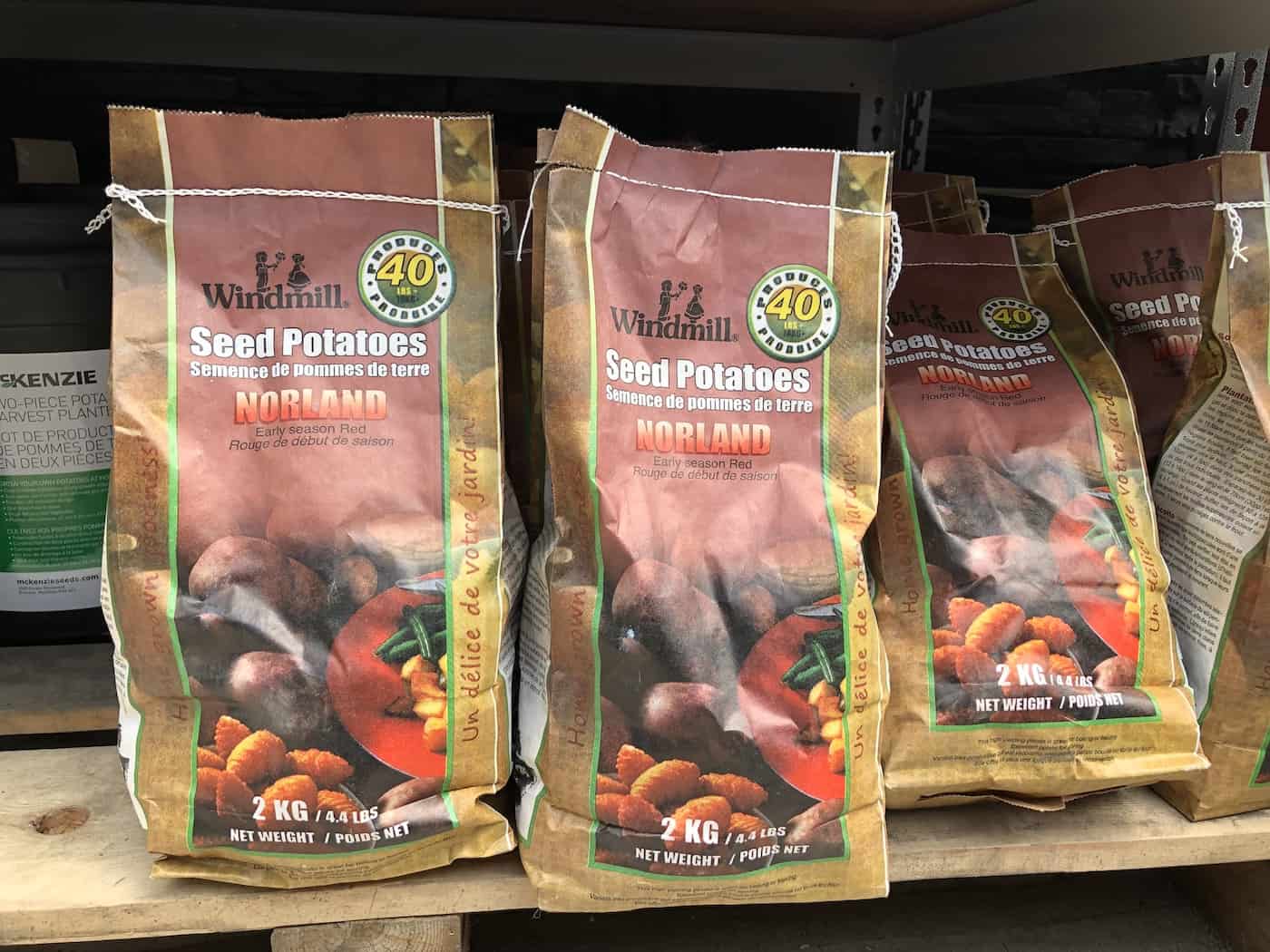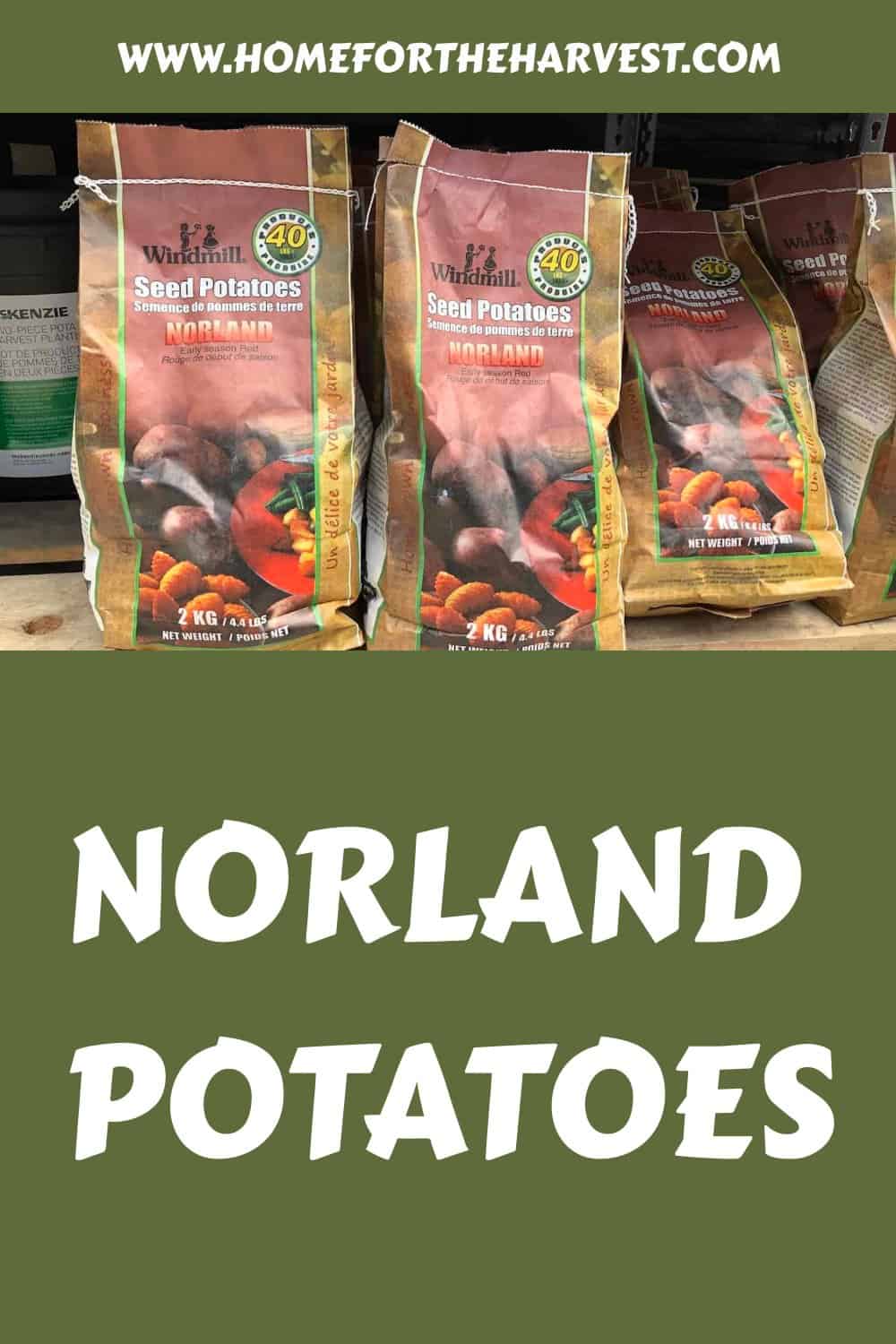Looking for a quick-growing potato for your garden? Try Norland potatoes!
Norland potatoes are an early-season variety with red skin and white flesh. These attractive, great-tasting potatoes are particularly well-suited to harvesting as new potatoes. Norland potatoes are disease resistant and take only 70-90 days to reach maturity in the garden. Norland is an all-around variety and is great for boiling, roasting, and frying.
Whether you are looking for a tasty new potato to enjoy fresh, or you want to try your hand at growing your own for chips or fries, Norland potatoes are a great option. Read on to learn more about this versatile potato variety.

Introduction to Norland potatoes
Norland potatoes are a popular variety of potatoes known for their early harvest and attractive red skin. These hearty potatoes are well-suited to a range of growing conditions, making them an ideal choice for gardeners and farmers alike.
The Norland potato was released in 1957 by North Dakota State University. Since its release, newer strains like Red Norland and Dark Red Norland have been developed from the original Norland. The Dark Red Norland is now one of the most popular red potato varieties in both home gardens and commercial new potato production.
Norland potatoes have smooth crimson-red skin and almost a pure white flesh interior. The tubers are oval and usually slightly flattened. Norland is a determinate potato variety.
Norland Potatoes are generally harvested when small as “new potatoes”. Norland potatoes are excellent for potato salad, boiling, roasting, and frying. The thin skin makes Norland unsuitable for baking whole baked potatoes.
Norland Potatoes are generally harvested 70-90 days after planting. This makes them some of the first potatoes ready in the garden, as they’re ready before other popular varieties like Yukon Gold & Kennebec.
Where to buy Norland seed potatoes
Looking to buy Norland seed potatoes for your garden? You can find them online or at local gardening stores/nurseries. Many seed catalogs also carry Norland seed potatoes, making it easy to order from the comfort of your home.
Seed potatoes are tubers from previous crops that will grow exactly like their parent plant from harvest to harvest. Because growers can predict the crops’ characteristics year after year, this is the most common technique for growing potatoes.

Preparing seed potatoes for planting
Small seed potatoes with only a couple sprouts/eyes are usually left whole. Larger seed potatoes, however, are generally cut up. When cutting, leave 1-3 eyes per piece. To minimize rotting in the ground and make them less susceptible to insect damage, allow the pieces to dry fully before planting. This usually takes a couple of days.
You can also “chit” your seed potatoes before planting. This means allowing them to sprout before they are planted. Chitting usually takes 3-4 weeks before planting.
To chit your seed potatoes, place them in a cool dry indoor location out of direct sunlight. Check the seed potatoes for sprouts regularly. Let the sprouts grow to 1″-2″ long before planting them out into the garden.
How to plant Norland potatoes
Norland Potatoes are best planted in mid-spring, about 2-4 weeks before the local last frost date. This is usually in March or April in most climates but might be as early as late February in the south or as delayed as early May in the far north. Here are some general guidelines:
- Zone 10+: January
- Zone 9: early February
- Zone 8: late February
- Zone 7: early March
- Zone 6: late March
- Zone 5: early April
- Zone 4: late April
- Zone 3: early May
- Zone 2-: late May
Potatoes require full sun and well-drained soil to thrive. Prior to planting, spade your soil to a depth of about 8-12 inches. Be sure to remove any rocks or clumps that could interfere with drainage and proper root growth.
Once you’ve prepped the soil, begin planting by digging small 3″-6″ deep holes in evenly spaced rows. Place one seed potato in each hole and cover lightly with soil. Space Norland potato plants about 12 inches apart. Water well after planting to settle the soil and encourage growth.
You can also plant Norland potatoes in a grow bag. This variety is perfect for growing in containers on the patio. It’s easy to dig around in the bag and pull out new potatoes as the plant grows.
Norland potato plant care
Norland potato plants are relatively low-maintenance, but there are a few things you can do to ensure a successful crop.
To discourage weeds and help retain moisture, apply a 2-3 inch layer of mulch around individual plants. Mulch also helps keep the soil temperature steady and provides a boost of nutrients (if you use nutrient-rich mulch like homemade compost).
As your potatoes begin to grow, you may need to “hill” them. This means adding more soil around the base of each plant as they grow. This helps keep the tubers from being exposed to too much sun, which can cause them to turn green and bitter.
Watering requirements for Norland potatoes
Another important part of growing potatoes is watering. The key is to keep the soil evenly moist, but not muddy or waterlogged. Avoid overhead watering as much as possible and instead use drip irrigation, soaker hoses, or a low-pressure sprayer on your plants.
Fertilizing Norland potatoes
Norland Potatoes require nutrient-rich soil to thrive, so it is important to fertilize them regularly with a high-quality fertilizer. The best fertilizer for Norland Potatoes will typically include a mix of nitrogen, phosphorus, and potassium, as these nutrients are essential for optimal plant growth and development.
Some good options for fertilizing Norland Potatoes include compost, manure, or a commercial fertilizer specifically designed for potatoes. Apply the fertilizer around the base of each plant about once per month during the growing season.
Harvesting Norland potatoes
Norland Potatoes are typically ready to harvest about 70-90 days after planting. Small “new” potatoes usually take about 70 days (10 weeks) while full-size Norlands take more like 90 days. To determine if they are ready, dig up a few plants and check the size of the tubers.
When harvesting, be careful not to damage the tubers. Use a garden fork or spade to loosen the soil around the plant, then carefully lift the plant out of the ground. Shake off excess dirt.
Once you have harvested your Norland Potatoes, store them in a cool, dark place until you are ready to use them. They will keep for several months when stored properly.
Companion plants for Norland potatoes
Norland potatoes are well suited for planting alongside a variety of other crops, making them an excellent choice for companion planting. Some good companion plants for Norland potatoes include lettuce, carrots, peas, beans, and onions. These crops can be planted together with Norland potatoes in order to provide beneficial nutrients and help suppress the growth of weeds.
Pests affecting Norland potatoes
There are a few common pests that can affect Norland Potatoes, including aphids, Colorado potato beetles, and cutworms. These pests can cause damage to the leaves, stems, and tubers of the plant, which can negatively impact yield.
To control these pests, it is important to take a proactive approach. This may include using organic pesticides as well as implementing cultural and biological controls. For example, you can try introducing natural predators of these pests into your garden, such as ladybugs or predatory mites. You can also use row covers to prevent the pests from reaching your plants in the first place.
Diseases affecting Norland potato plants
Norland potatoes are susceptible to a number of plant diseases, including early blight, potato scabs, and verticillium wilt. These diseases can cause damage to the leaves, stems, tubers, and roots of the plants, potentially reducing yield and impacting crop quality.
Good garden hygiene can minimize these diseases from affecting your Norland potatoes. This may include using crop rotation and sanitation practices, as well as choosing disease-resistant varieties of potatoes whenever possible. Additionally, you can try implementing cultural controls, such as watering regularly and providing sufficient nutrients for your plants.
Recipes for Norland potatoes
There are many delicious ways to use Norland potatoes in your cooking, from roasted potatoes and mashed potatoes to potato salads and more. Some quick and easy recipes you can try include:
Roasted Norland potatoes
Preheat the oven to 400 degrees F. Chop up a pound of Norland potatoes into bite-sized pieces and toss with olive oil, sea salt, and black pepper. Spread the potatoes out on a baking sheet and roast for 25-30 minutes or until golden brown.
Mashed Norland potatoes
Peel and chop up two pounds of Norland potatoes. Boil in water for 10-15 minutes or until tender. Drain the potatoes and add them back to the pot. Mash with some butter, milk, salt, and pepper to taste.
Norland potato salad
Boil two pounds of Norland potatoes until tender. Chop them up into bite-sized pieces and add to a large bowl along with some chopped celery, red onion, dill pickles, mayonnaise, and mustard. Mix until everything is well coated and season with salt and pepper to taste. Serve cold.
With their delicious flavor, versatile cooking applications, and easy-to-grow nature, Norland potatoes are a great choice for any home gardener! Whether you’re planting them on your own or buying them from a local farmer’s market, be sure to take advantage of all the amazing ways to use these versatile tubers in your cooking. From roasted potatoes and mashed potatoes to potato salads and more, there’s no shortage of delicious recipes that feature this delicious vegetable! So why wait? Start cooking with Norland potatoes today!
FAQs about the Norland potato
What are Norland potatoes good for?
Norland is an all-around variety and is great for boiling, roasting, and frying. They are also disease-resistant, making them excellent growing potatoes.
How long does it take for Norland potatoes to reach maturity?
Norland potatoes only take 70-90 days to reach maturity. They are considered an early variety and take less time to mature than many other cultivars.
How do you harvest Norland potatoes?
To harvest Norland potatoes, use a garden fork or spade to loosen the soil around the plant, then carefully lift the plant out of the ground. If growing in a bag, you can gently tip the whole thing over. Be careful not to damage the tubers. Shake off excess dirt, wash, and enjoy!






